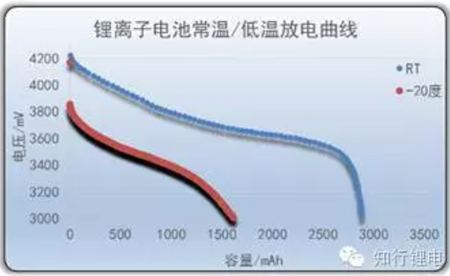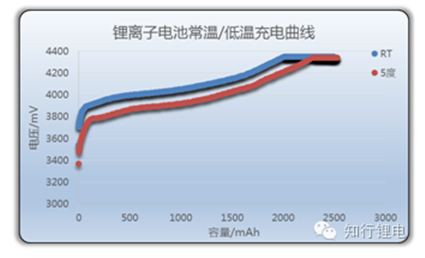What is the low temperature technology of Li ion battery?
EverExceed have recently introduced a new technology of low temperature Lithium iron phosphate battery, which can be charged even under 0°C and in negative temperature. In a series of 5 technical articles we are going to elaborately describe the details of this revolutionary technology. In this article we are going to talk about the “performance” of the low temperature technology lithium battery.
Performance:
For
lithium-ion batteries, whether it is national standard or enterprise standard, there is a strict range on the lower limit of discharge temperature: no less than-20°C. As for the charging temperature, it will not only specify the minimum temperature like discharge, but also clearly stipulate that the charging can only be done at a small rate at low temperature and cannot be fully charged (for example, charging at 0 ~ 15°C can only be done at 0.2C, and the upper limit voltage is 4.0V), for fear that the user will cross the thunder pool. So the question is, originally what users need is an all-round fighter who should take into account both high and low temperature performance, but why do lithium battery manufacturers set these harsh restrictions?
Let's start with the performance of lithium-ion batteries at low temperatures. For the same rate of discharge, the lower the external temperature is, the lower the discharge voltage will be. As shown in the figure below:

It can be seen from the figure that when the temperature decreases, the discharge voltage of the battery also decreases greatly, so that the battery will reach the discharge cut-off voltage faster when discharging at low temperature, resulting in the low temperature discharge capacity significantly lower than the room temperature capacity. It needs to be explained that the capacity of lithium-ion battery at low temperature does not disappear, but it cannot be discharged completely within the normal voltage range (≥ 3.0V). If the discharge cut- off voltage can be further extended, the remaining capacity can be discharged. But the problem is that the low voltage cannot keep the normal use of electrical equipment, so the low lower limit voltage (< 2.5V) is generally not much discussion significance.
Compared with low-temperature discharge, the performance of low-temperature charging of lithium-ion battery is more unsatisfactory. Firstly, the charging at low temperature will quickly reach the constant voltage stage, reduce the charging capacity to a certain extent, and increase the charging time, as shown in the figure below:

Moreover, when the lithium-ion battery is charged at low temperature, the lithium ion may not be embedded in the graphite anode, so that the lithium dendrite will precipitate on the surface of the anode to form metal lithium dendrite. This reaction will consume the lithium ion in the battery that can be charged and discharged repeatedly, and greatly reduce the battery capacity. The separated metal lithium dendrite may also pierce the diaphragm, thus affecting the safety performance. The pictures of lithium evolution on the negative electrode surface of Li ion battery after low temperature charging are as follows:

The low temperature discharge capacity of Li ion battery will decrease, but it can be recovered after charging and discharging at room temperature, which is a reversible capacity loss; but low temperature charging will cause lithium precipitation, which is a permanent capacity loss.
Due to the greater harm of lithium evolution caused by low-temperature charging, the control of low-temperature charging of lithium-ion battery is stricter than that of low-temperature discharge. At present, many battery companies describe the charging conditions of lithium -ion batteries in the way of "step charging". Here is a similar example:
|
Charging temperature
|
Charging current
|
Upper limit voltage
|
|
0℃~10℃
|
0.2C
|
4.0V
|
|
10℃~20℃
|
0.5C
|
4.35V
|
|
20℃~45℃
|
1.0C
|
4.35V
|
Although the above description of step charging is a bit "pit" for customers, it is a method commonly used by battery manufacturers to avoid lithium precipitation during low-temperature charging,
Now it's time to make a summary. Due to the lower voltage plateau of lithium-ion battery at low temperature discharge, the discharge capacity at low temperature will be significantly reduced, but this loss will be automatically compensated with the normal temperature charge and discharge, which is a reversible loss. But for low-temperature charging, too low temperature or too high rate will cause irreversible lithium dendrite formation and irreversible capacity loss, and affect the safety performance of the battery.
Conclusion:
To match the requirement of cold countries where you need reliable
energy storage solution in outdoor application, EverExceed research and development engineers were working for long time for a suitable solution and thus came the new technology. So for your cold temperature energy storage solution choose EverExceed as your brand with complete reliability.



